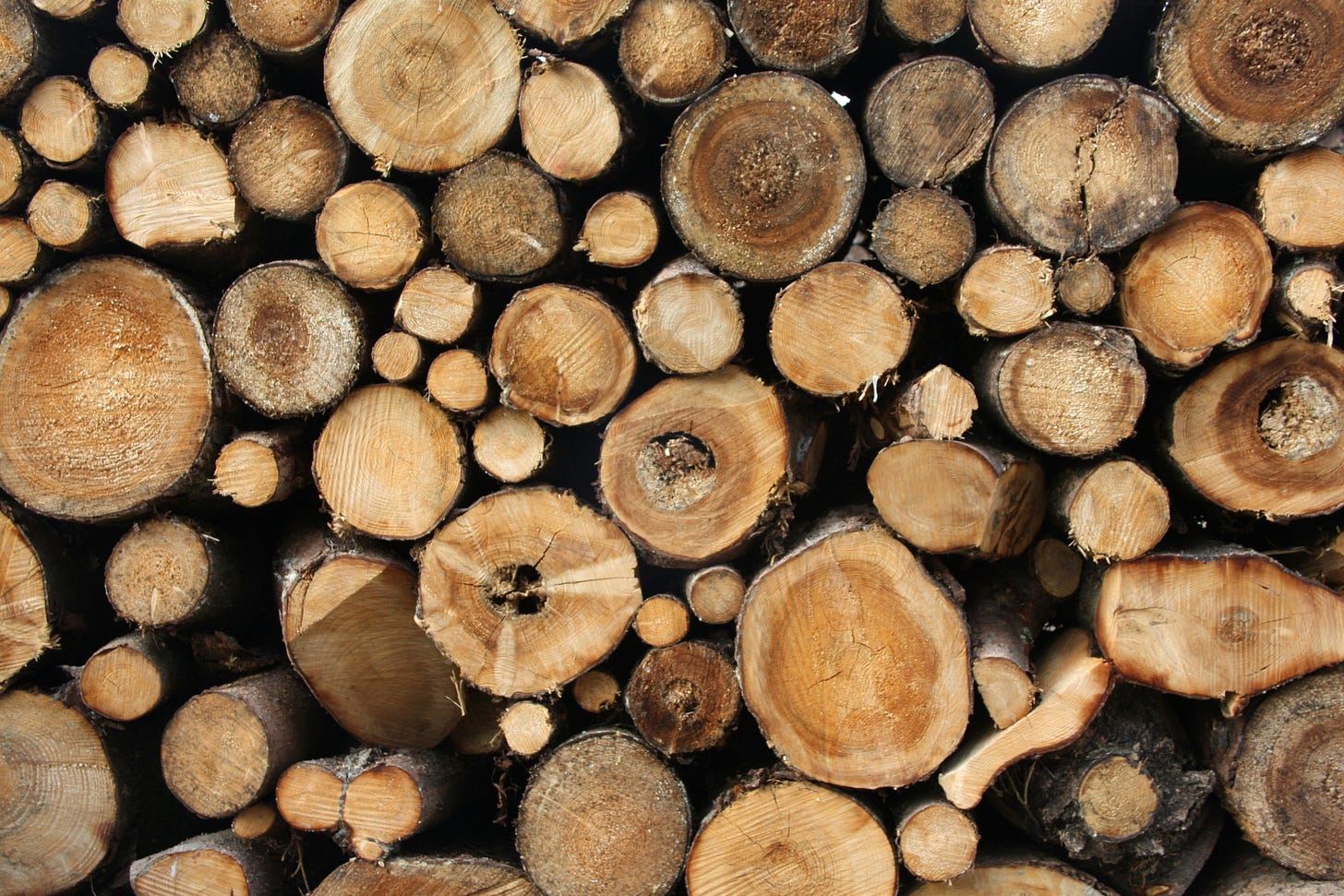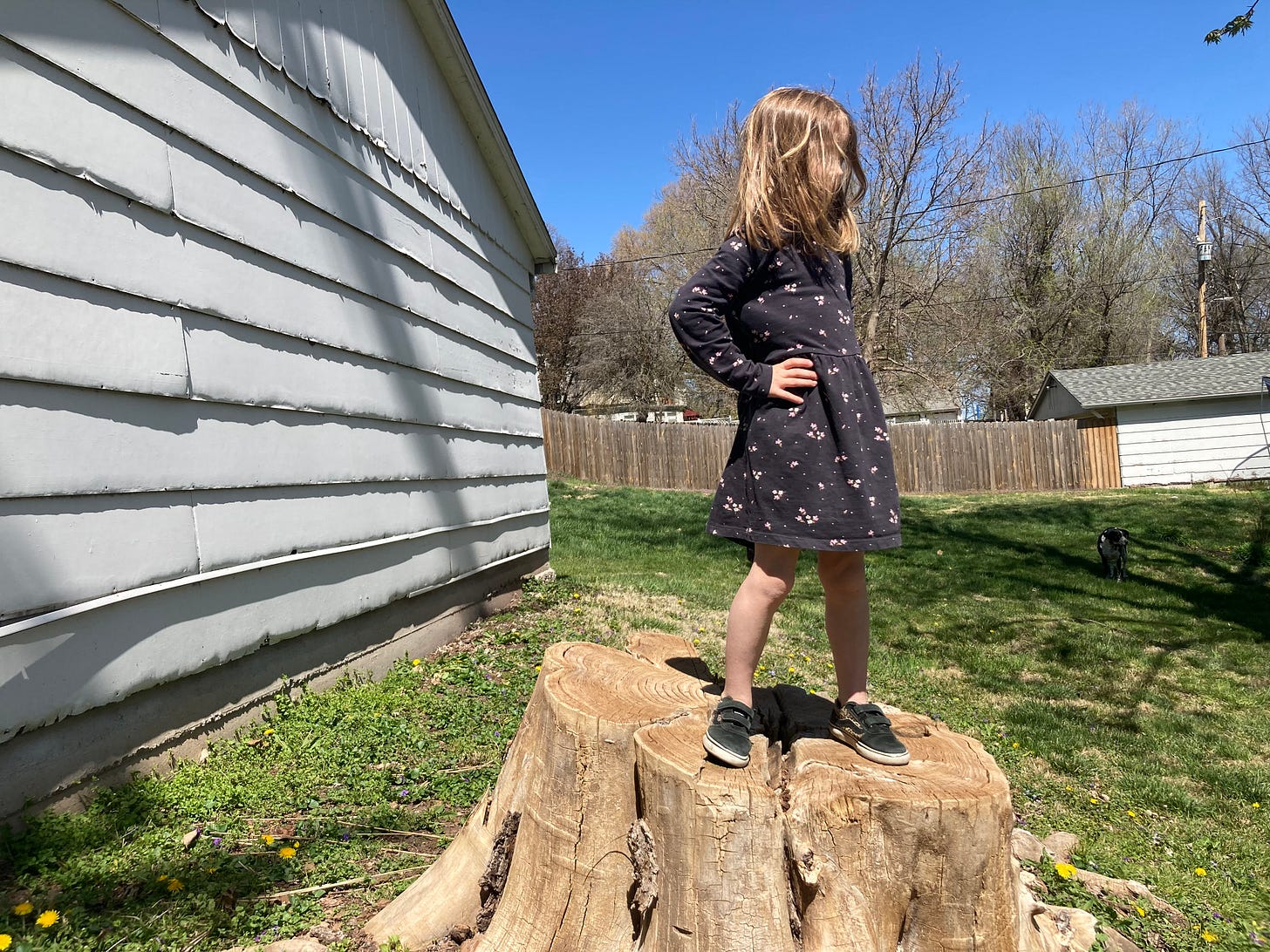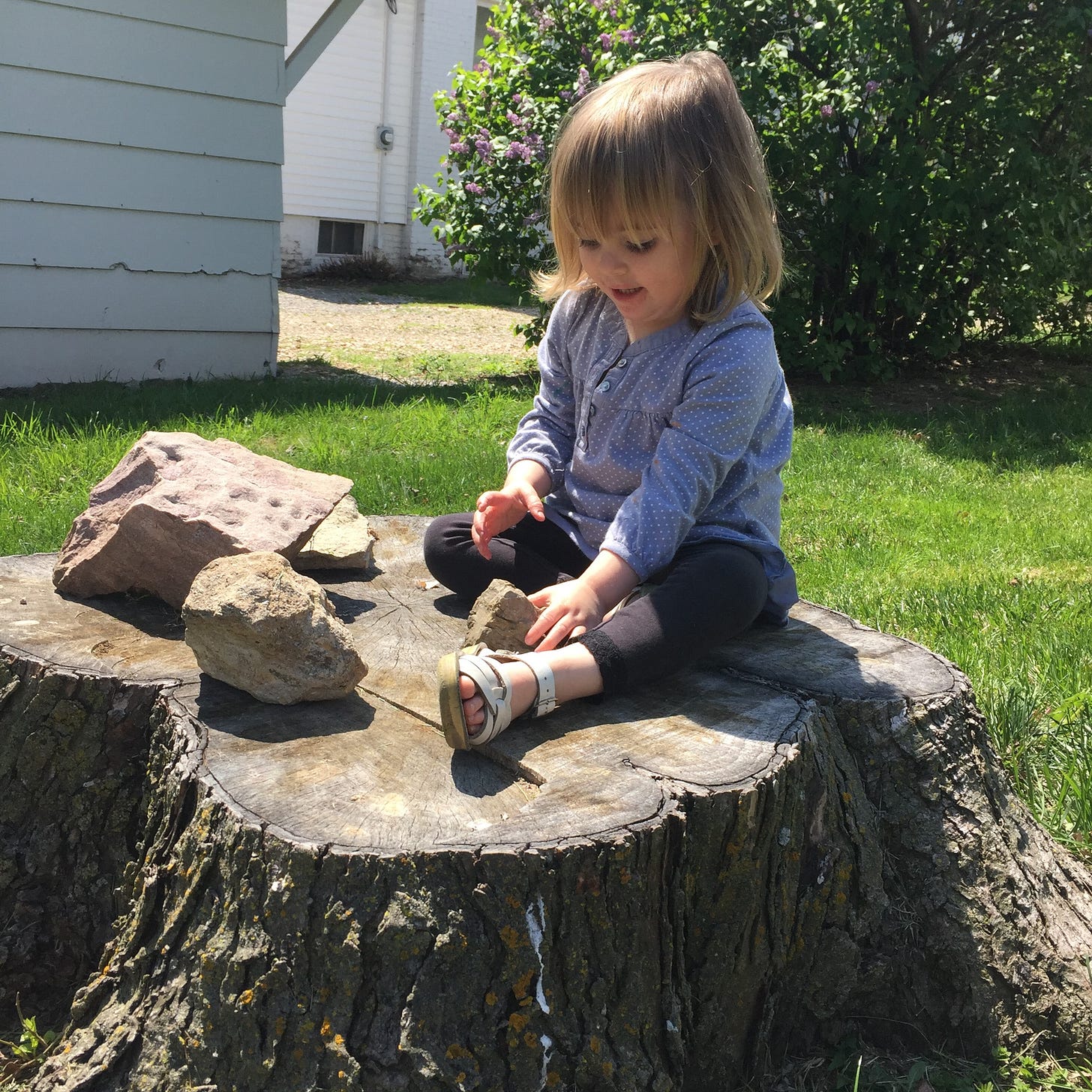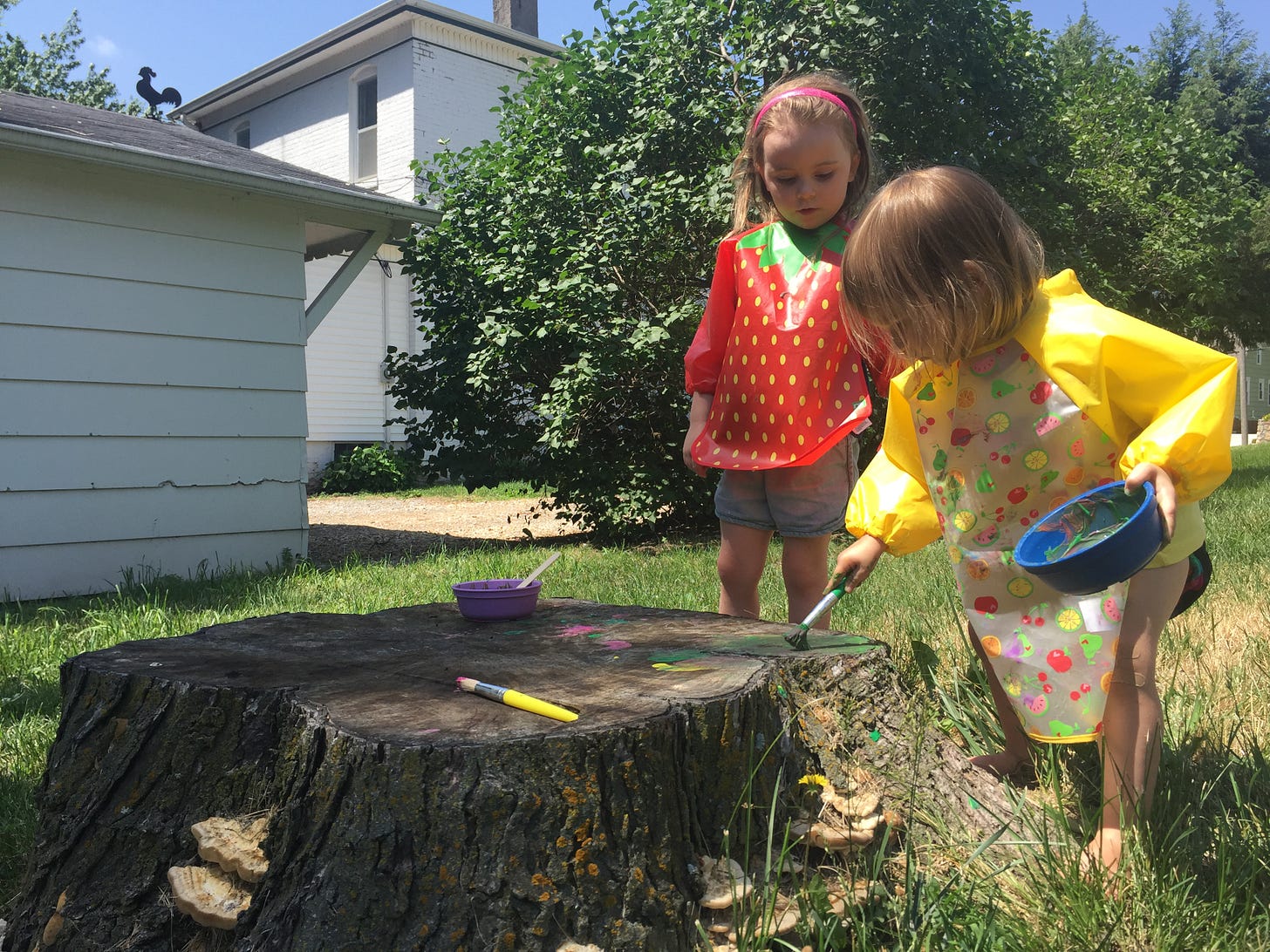Dancing on Tree Stumps
"Maybe we can find a way to dance upon it, to plant against it, to see where the light comes in even more because of it."
The landscape around us changed one summer, but not because of anything we did. The neighbors on one side warned us they were planning to build a privacy fence, but when they began measuring and hammering the posts into place, I felt uneasy about the space narrowing before our eyes.
At the same time, the neighbors on the other side, without warning, called in the arborists to cut down the great old tree that stood behind their garage. When both edges of our yard were suddenly frantic with the activity of change, it was unsettling.
It was as if one side was compensating for the other; one space was closing in, while the other was opening up. And the tree, awaiting its fatal surgery, was witnessing what it might become, what it’s body might be used to build.
It was painful to watch. To be there as it happened. To hear the angry sound of the chainsaw and the heavy thud of each segment hitting the ground. The sawdust filling the air, blanketing surfaces. Irritating my senses and clinging to the patio furniture. I rubbed my eyes and brushed off the splintered cushions, wishing the neighbors would keep their sawdust to themselves. In the absence of physical boundaries, it was free to drift towards us and blanket our belongings. Not everything can stay separate and contained.

After a series of cracks and thuds, the heavy machines rolled out leaving tracks behind, the debris was cleared, the limbs picked up, and the dust swept between the cracks of the decking. I stood frowning and squinting at the altered landscape while the fence builders laid down their tools to go to lunch.
Alerted by the relative quiet, the resident squirrels reemerged. I watched as they began to dart back and forth on the roof of the garage, searching for their usual perch, their bridge from a to b.
Our dog wandered across the last invisible border, similarly confused and sniffing the ground, the usual landmarks had disappeared; her reference points had been removed.
Later, I broke the news to my children who lamented the loss of the tree as though it were a loyal friend. They loved resting in its shade, clambering over its boney roots, sitting and digging, burying things between them.
I tried to lift their sad eyes to new possibilities by bringing them to ground level:
“Perhaps the stump could become a table for tea parties, a platform to dance upon, a canvas for creativity? And now a little more light can break in. A little more sky can be seen from where we stand. And in that light, new things can grow.”
Moving my eyes across to the fence, I pictured sunflowers growing in full sun against the new 7ft panels, competing against their imposing height, peeking their large brown faces and yellow crowns over the top.
I soothed myself with the added benefit of fewer escape routes for the dog and toddler (and the extra layer of privacy we didn’t ask for but will certainly use). I also reminded myself how important it is to remove old and unstable structures to minimize risk of damage in the midst of summer storms.
Every change to the landscape brings grief, whether it causes a small tug of sadness upon the heart from the loss of one tree, or a complete break from a life-altering devastation—a whole forest felled. It hurts and unsettles, it forces a sudden adjustment, a new but unwanted way of seeing. A loss because of something built up, a loss because of something torn down. Something gained, something taken away.
But maybe we can find a way to dance upon it, to plant against it, to see where the light comes in even more because of it. And perhaps build bridges, not fences, from the broken bodies of the trees we must cut down.
I hope you enjoyed this post. My kids have made good use of tree stumps over the years! Look out for an important announcement next week about an upcoming series called “The Uprooting”. Thanks friends!







Another beautiful work, Abi 👏